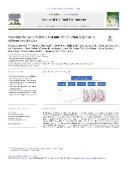Increasing the cost-effectiveness of nutrient reduction targets using different spatial scales

Autor
Czajkowski, Mikolaj
Andersen, Hans E
Blicher-Mathiesen, Gitte
Budzinski, Wiktor
Elofsson, Katarina
Hagemejer, Jan
Hasler, Berit
Humborg, Christoph
Smart, James C. R
Smedberg, Erik
Thodsen, Hans
Was, Adam
Wilamowski, Maciej
Zylicz, Tomasz
Hanley, Nick
Datum vydání
2021Publikováno v
Science of the Total EnvironmentRočník / Číslo vydání
790 (10 October 2021)ISBN / ISSN
ISSN: 0048-9697ISBN / ISSN
eISSN: 1879-1026Metadata
Zobrazit celý záznamTato publikace má vydavatelskou verzi s DOI 10.1016/j.scitotenv.2021.147824
Abstrakt
In this paper, we investigate the potential gains in cost-effectiveness from changing the spatial scale at which nutrient reduction targets are set for the Baltic Sea, with particular focus on nutrient loadings from agriculture. The costs of achieving loading reductions are compared across five levels of spatial scale, namely the entire Baltic Sea; the marine basin level; the country level; the watershed level; and the grid square level. A novel highly-dis aggregated model, which represents decreases in agricultural profits, changes in root zone N concentrations and transport to the Baltic Sea is used. The model includes 14 Baltic Sea marine basins, 14 countries, 117 watersheds and 19,023 10-by-1 0 km grid squares. The main result which emerges is that there is a large variation in the total cost of the program depending on the spatial scale of targeting: for example, for a 40% reduction in loads, the costs of a Baltic Sea-wide target is nearly three times lower than targets set at the smallest level of spatial scale (grid square). These results have important implications for both domestic and international policy design for achieving water quality improvements where non-point pollution is a key stressor of water quality. (c) 2021 The Author(s). Published by Elsevier B.V. This is an open access article under the CC BY license (http:// creativecommons.org/licenses/by/4.0/).
Klíčová slova
Cost-effectiveness, Nutrient pollution, Agricultural run-off, Baltic Sea, Eutrophication
Trvalý odkaz
https://hdl.handle.net/20.500.14178/3050Licence
Licence pro užití plného textu výsledku: Creative Commons Uveďte původ 4.0 International



